I have also tried to time myself to see if I was getting any faster, clocking up 17 plants in 3/4 on a day earlier in the month, then 10 in 1/4 of a day, then 25 in a day but because the plants were all different sizes, and in some instances we shared plants between us, that was not a particularly useful exercise.
But now that they are largely done, what I am really interested now is to see how these plants will fare in the summer, how they will flower and fruit: whether the size of the fruits really makes this system worth the effort. Because these rows of plants so close together (30-45 cm between plants and about 1 m between rows) and pruned so hard all the time (lateral to 5 leaves in the summer and to 2 buds in winter), while supposedly producing bigger fruit, they need to be replaced more frequently.
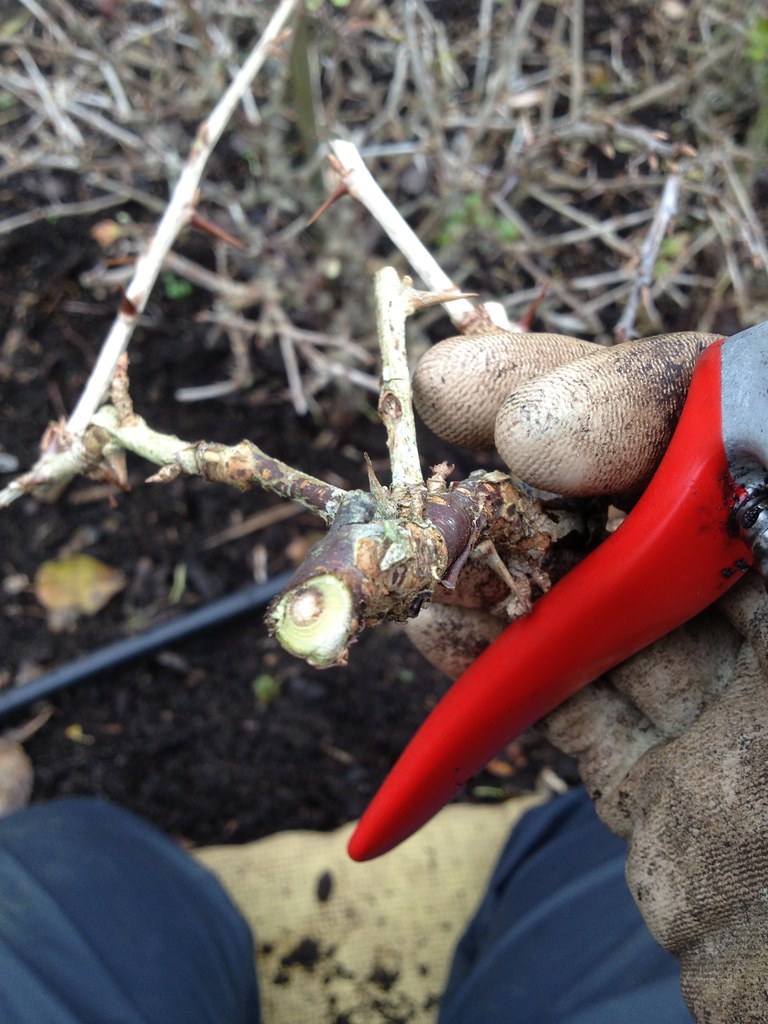 |
| Discolouration in stem, indication of fungal disease |
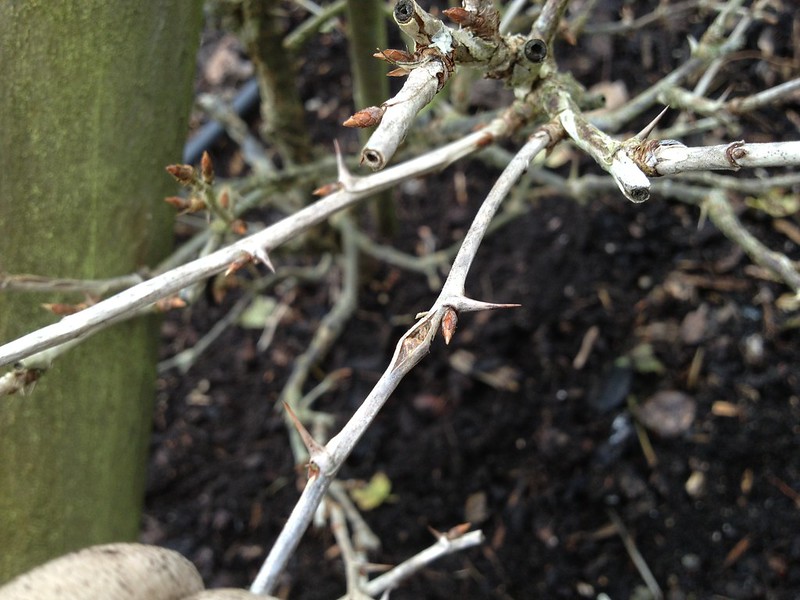 |
| Swelling of stem above a bud |
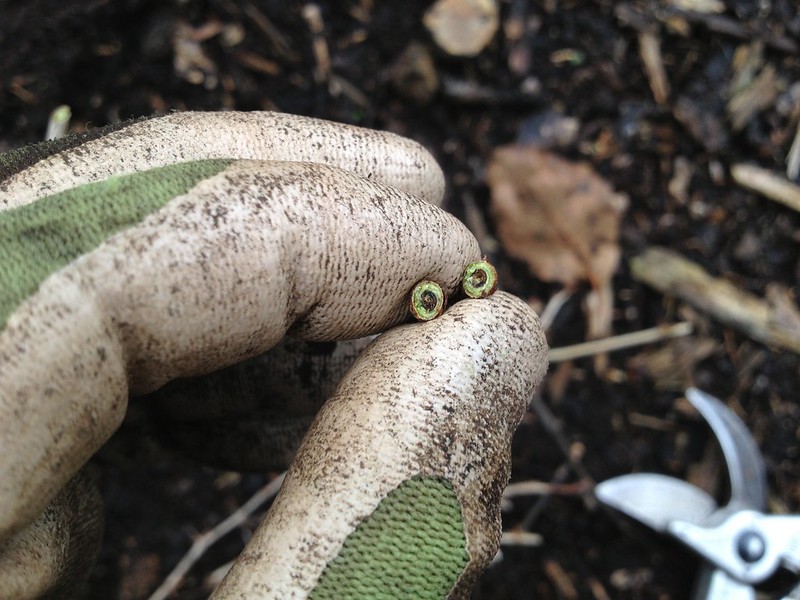 |
| Slicing through the swelling |
 |
| Localised nature of the discolouration |
The collection is being renewed and moved to a new site to try and improve its vigour, and I will be probably be able to take part in part of the renovation before I leave the Garden, which is quite exciting, really.
And for a change from just pruning, I have also helped propagate some of the cuttings we took for the purpose. The ones we had cut off last month had been heeled in in a pot, as we did not have time to deal with them straight away. When we went to fetch them we were rather surprised to find some of them had callused, or even already rooted quite well, thanks to the mild weather: very promising indeed (although we were told that sometimes you need to scratch away callus, as it prevents proper rooting in some cuttings, but it should not be the case with gooseberry)!
We used the propagation facilities to pot them properly.
 |
| Scooping up compost |
 |
| If topping up needed,hand scooping avoided compacting |
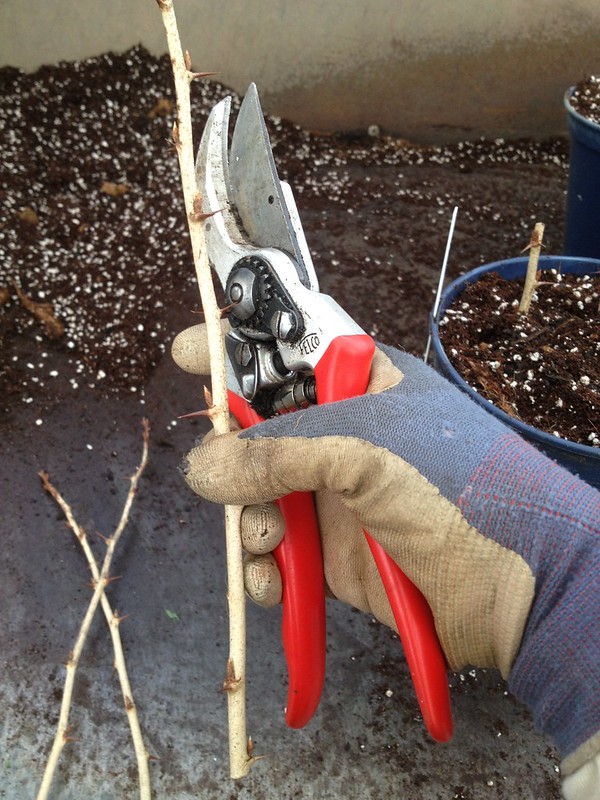 |
| Cutting to size |
Unless they had taken already (in which case they were potted whole) cuttings were cut to secateur's length to a bud (with slanting cut, to remember which side is which, as the bottom is cut flat)
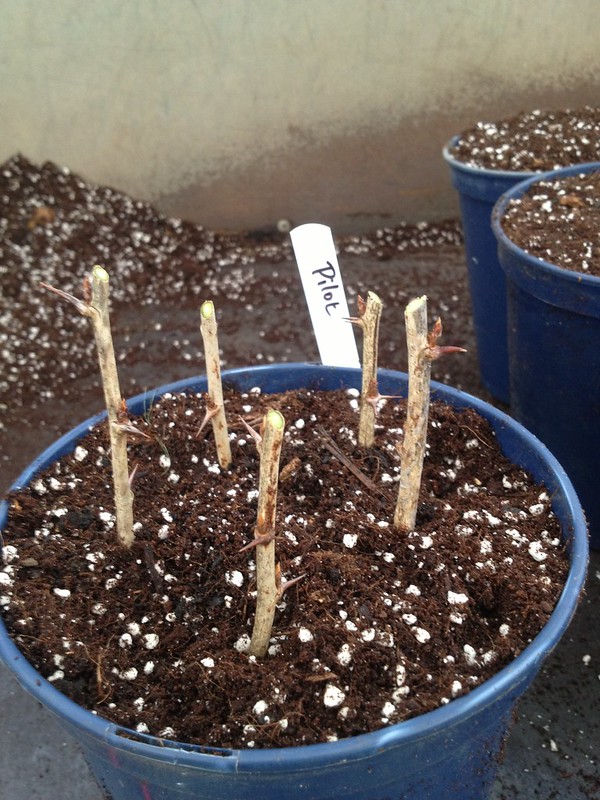 | |
| Potted |
Five to a pot were they plunged into the compost (after dipping into hormone rooting powder, and leaving just the top 5-10 cm out), then labelled...
... and off were they wisked into the magic world of the propagation houses, where they will be taken care of so their chances of taking and thriving are maximised.
We did not remove any buds from the lower part of the cutting (which is done to avoid suckering and grow the bush on a leg) to help maximise rooting and minimise wounding to the cuttings. Once the cuttings are rooted, if you want to grow your shrubs on a leg (which is what we do with cordons, and which produces bigger fruits), you will disbud some 15-20 cm of the lower stem, keeping only 4 or 5 buds, which you will use for the framework of your shrub.
If you grow them as cordons, you encourage the leader to grow, up to the topmost wire, by cutting it to half its size, still encouraging upright growth, while keeping the other branches short (2 buds in winter).
If you grow them as shrubs on a leg, you keep a framework of four of five outward and upward growing branches, treating them all as different leaders (shortening them to half as you develop the framework) - we grow shrubs as if every framework branch was a cordon of its own in the Garden.
You can also grow your gooseberries as stools, by encouraging growth from the base and regularly renewing the structure: the fruits will be smaller, but the plants longer-lived. I found this leaflet provides useful propagation guidance.
No comments:
Post a Comment